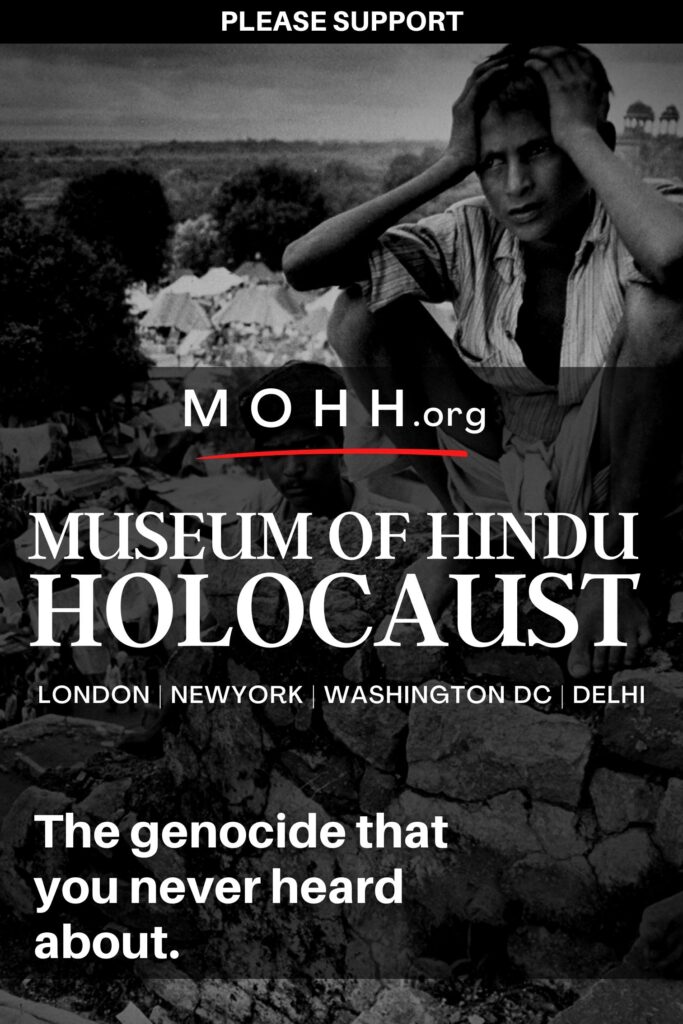[ Reported as seen]
Chuknagar massacre was a massacre committed by the Pakistan Army with the active participation of some Bangladeshi-origin Islamists ,also called Razakars, during the Bangladesh Liberation War in 1971. The massacre took place on 20 May 1971 at Dumuria in Khulna, Bangladesh.
It is the largest single-day massacre in Bangladesh.
Chuknagar is a small business town located in Khulna district and very close to the India-Bangladesh border. In the early morning of May 20, the Pakistani soldiers, carrying light machine guns (LMGs) and semi-automatic rifles, opened fire on the civilians. Ten thousand civilians, mostly members of the region’s Hindu minority waiting to seek refuge in India, were killed in one day. Many women were raped before being shot, and their brutalized dead bodies were thrown into the Bhadra River.
In 2010-11, nearly forty years after the Chuknagar Massacre, the Center for Bangladesh Studies in Dhaka published Muntasir Mamoon’s horrifying documentary evidence of the massacre. In his book, ‘Chuknagar genocide:1971′. Mamoon mentions that he started collecting oral history from eyewitnesses in 1995. Because of political pressure, he had to wait 15 years before his book could be published.
The book presents the accounts of two hundred victims and eyewitnesses. One eyewitness, the Principal of the school in Chuknagar said, “There were piled up dead bodies. Dead children on dead mothers’ laps. Wives hugging their beloved husbands to protect them from killer bullets. Fathers hugging their daughters to shield them. Within a flash, they all were just dead bodies. Blood streamed into the Bhadra river, it became a river of corps. A few hours later when the Pakistanis ran out of bullets, they killed the rest of the people with bayonets.”
Some of the testimony-givers were without family, and many had left Bangladesh, fearing targeted intimidation by the Razakars who continue to influence political influence in some areas. Unfortunately, the international community is not aware of this horrific genocide. Even Bangladeshis know very little about it. Present-day Bangladesh is littered with places soaked with Hindu blood that was spilled in 1971.
On a sultry afternoon in May 1971, Wajed Ali stood exhausted on the banks of the Bhadra river in East Pakistan. He had made enough money not only for the day but for the months to come. In the uncertain times of the Muktijuddho, it is always a good idea to have some extra savings up in the sleeve. Ansar Ali Sardar had also made a similar fortune, and so did the other 40 odd men on that day.
From the dawn of 21 May, they were engaged in disposing of corpses that lay along the streets of Chuknagar, from Patakhola Beel to the Bhadra river and from Satkhira Road to Ghangrail river. For miles, women lay on the ground grasping their husbands, children clasping their parents, and infants suckling their mother’s breasts. Fifty paise for each corpse, their contractors Siraj Uddin, Ghulam Hussain, and Haidar had offered, but the real bounty lay in the cash and jewelry that the dead still had to offer.
Wajed Ali had teamed up with another fortune seeker, and together they began to dispose of the corpses one by one into the Bhadra river. He and his partner counted till 4,000 when they decided it was enough. The cash and jewelry in possession of the dead were what caught their attraction, to the effect that they often missed the count, which was valued at a mere 50 paise. Leaving aside the bounty, Wajed Ali would have made thousand rupees on a single day, more than three times the per capita income of East Pakistan in a fiscal year.
The massacre at the Jagannath Hall – the Hindu students’ hostel of Dhaka University, the gruesome massacre in the Hindu inhabited Shankharibazar neighborhood of Old Dhaka, and the destruction of the iconic Ramna Kali temple along with the massacre of devotees left no doubt as to who the targets of the ethnic cleansing were. The victims had been on their way to India, fleeing their motherland in the hope of survival. Considered the enemies of Pakistan based on their Hindu identity, their extermination and expulsion had become the unstated policy of the martial law regime as the ‘final solution’ for the problematic province.
As East Pakistan’s district and sub-divisional towns fell to the Pakistan Army one by one, hundreds of thousands of Hindus began to flee the country. On the fateful day of 20 May, an estimated one hundred thousand Hindus had arrived in Chuknagar, a riverine transit point for their onward journey to India. Alerted by the local collaborators, Brigadier Muhammad Hayat led a Pakistan Army platoon to Chuknagar. No sooner than the trucks reached the spot, the men began firing indiscriminately at the refugees. Commencing at 11 am, the killings came to a halt at around 3 pm, only because the Pakistan Army had run out of magazines.
The death toll in Chuknagar is commonly believed to be somewhere between ten and twelve thousand. Ansar Ali Sardar, who was engaged in disposing of the corpses, had recalled later that the 42 men worked in 21 pairs, and he and his partner had disposed of the bodies in batches of 200, presumably to speed up the proceedings. In this process, he and his partner may be reasonably expected to have stacked up a number in the vicinity of Wajed Ali and his partner’s 4,000, a conservative number by the latter’s admission. If each pair is considered to have disposed of a similar number of corpses, the death toll would amount to 84,000, exclusive of the bodies that already lay in the ponds and ditches.
Even with the commonly cited estimate of twelve thousand, the civilian massacre at Chuknagar stands leagues apart from the likes of My Lai and Lidice, often referred to in the context of mass killings during the Bangladesh Liberation War. The five-figure mark at Chuknagar within a span of four hours is only matched in scale and intensity by the massacres at Babi Yar (33,771 victims, 29-30 September 1941), Odessa (25-34 thousand, 2-4 October 1941), and Operation Harvest Festival (43 thousand, 3-4 November 1943) during the Holocaust.
The connection between Chukanagar and the Holocaust is not just a superficial comparison of the death toll. During Pakistan Army’s extermination campaign in East Pakistan, a US official commented, “It is the most incredible calculated thing since the days of the Nazis in Poland.” Just as the Nazis couldn’t have carried on a massive extermination campaign without local collaborators, so couldn’t have the Pakistan Army, who heavily relied upon groups like the Razakars, Al Badr, Al Shams, and Peace Committee, to name a few. The first batch of 96 Razakars took oath at an abandoned Ansar camp in Khulna earlier in May 1971, not far away from Chuknagar. As they took an oath to defend Pakistan from the enemies with their hands stretched out forward, their oath-taking gesture eerily resembled the Nazi salute.
The genocide eventually came to a halt after India’s military intervention liberated Bangladesh as a sovereign nation. The perpetrators of the genocide were never brought to trial following a series of exchanges of prisoners and stranded citizens between Bangladesh and Pakistan, mediated by India. The reality of Hindu genocide was also conveniently rebranded as Bengali genocide in the name realpolitik. However, the increasing persecution of Hindus in Bangladesh in the last decade has led to renewed interest among the Bengali Hindus on the genocide they endured half a century ago.
In the fiftieth year since the Bangladesh Liberation War, the Bengali Hindus at home and abroad have begun commemorating the genocide on 27 March, in memory of the day when the Ramna Kali temple was destroyed. The temple’s destruction symbolically represents the systematic destruction of the five millennia-old Bengali Hindu civilization and culture that prospered in the land. However, genocide is a complex and elaborate process spanning space and time. Nurturing every detail of genocide in the collective memory is essential. The loss of any single story lets the insidious self-denial creep in, allowing it to multiply like a virus that eventually conquers the host. Chuknagar, the deepest scar of 1971, deserves a special annual commemoration more than any other incident. Better late than never, it should commence in earnest on the fifty-first year of its occurrence.


![Chuknagar massacre [ Khulna, Bangladesh]](https://www.projecthindukush.com/wp-content/uploads/Screenshot-1105-550x420.png)
![Chuknagar massacre [ Khulna, Bangladesh]](https://www.projecthindukush.com/wp-content/uploads/WhatsApp-Image-2022-05-07-at-10.31.36-PM-696x600-1-550x420.jpeg)
![Chuknagar massacre [ Khulna, Bangladesh]](https://www.projecthindukush.com/wp-content/uploads/HINDU-LIVES-MATTER-1-550x420.png)
